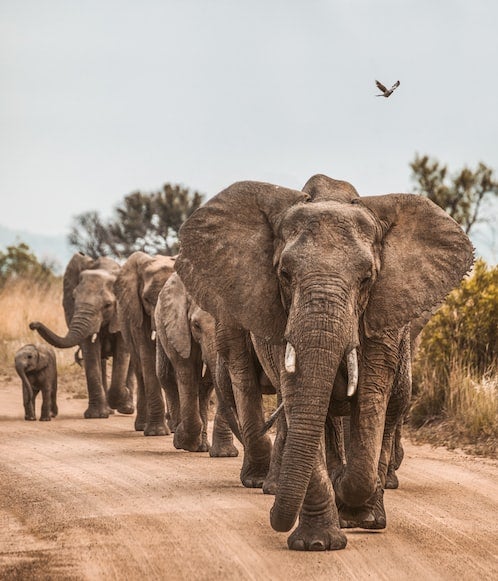Botswana faces fierce resistance from west Africa over ivory trade proposal
A joint statement alleges that elephants in Botswana and other southern african nations are at risk from high levels of local and transboundary poaching

Botswana’s next attempt to seek passage to sell its ivory stockpile will be met by fierce opposition from western African countries.
Following their failure to convince CITES at Zimbabwe Elephant Summit in May this year Botswana and its neighbors (Zimbabwe, South Africa, Namibia, Zambia) will again relaunch their campaign at the CITES CoP19 in Panama in November this year.
Their attempt to secure a waiver to sell their ivory was declined by the Convention on International Trade in Endangered Species of Wild Fauna and Flora (CITES) on the basis that legal trade would negatively impact elephant populations and fuel organized criminality.
Following the Summit, Botswana and Zimbabwe threatened to quit CITES and explore alternative markets for their ivory.
Speaking after the Zimbabwe Summit, Botswana’s Director of the Department of Wildlife and National Parks (DWNP) Dr. Kabelo Senyatso said they would weigh the option to quit or remain members of CITES after the Panama meeting of the international organisations where their proposal will be submitted.
West African countries (Burkina Faso, Equatorial Guinea, Mali and Senegal) have, however, moved beyond opposing the campaign by Botswana and her neighbors and have now upped the ante.
The West African countries want Botswana and her neighbors to be moved from Appendix II to Appendix I arguing that they do not fulfill the criteria (as set out in that Article I of CITES) for separate listing in Appendix II.
Appendix I includes species that are the most endangered among CITES-listed animals and plants perceived to be threatened with extinction, while Appendix II lists species that are not necessarily now threatened with extinction but that may become so unless trade is closely controlled. Only countries in Appendix II can apply for permission to sell their ivory.
The pro-elephant-hunting-ban West African countries stated that,“the transfer from Appendix I to Appendix II therefore contravened the Convention. Returning all African elephant populations to Appendix I is necessary to correct this error and enable the CITES Conference of the Parties (CoP) to restore the appropriate legal framework for listing African elephants,” the countries, together with Syrian Arab Republic wrote in their proposal for amendment of Appendices I and II at the CoP19 in Panama later this year.
The countries argue that opening markets for ivory trade increases opportunities for poaching and illegal trafficking of ivory.
“In 2016, the IUCN (International Union for Conservation of Nature) African Elephant Status Report noted an increase in elephant poaching in Botswana. In 2019, researchers found that despite stable elephant populations, numbers of (fresh) elephant carcasses in Northern
Botswana increased by 593% between 2014 and 2018, indicating a growing poaching crisis, with estimates suggesting a minimum of 385 elephants were poached in Botswana between 2017 and 2018,” the proposal says.
The countries say there is evidence that ivory poaching on the scale of hundreds of elephants per year has been occurring in northern Botswana since 2017 or possibly earlier.
“Elephant poaching and ivory trafficking is a transboundary issue in Southern Africa, with reports of poachers crossing into Zimbabwe, Botswana, Zambia and Namibia to poach ivory.”
The proposal also points to Botswana’s reluctance to share information on poaching activities since President Mokgweetsi Masisi took over, choosing rather to adopt a reactive approach to reports on poaching.
“Since 2019, very little information has been published about elephant poaching in Botswana, an issue of transparency in and of itself, and in 2021 there were reports of worsening rhino poaching dating back to 2018,” the West African countries say in their proposal.
Arguing for a waiver to sell its ivory stockpile, Botswana’s spokesperson Dr. Kabelo Senyatso said it has proved expensive for Botswana and other nations in the southern African region to keep ivory stockpiles.
“The marking of elephant tusks has proved to be costly and storerooms where ivory is kept should be at a certain temperature. We are spending millions of Pula in a year,” he said.
Elephant populations are managed according to elephant management plans and strategies at national level and in accordance with local dynamics. Botswana and its partners have argued that elephant conservation requires enormous resource inputs.
That the costs of law enforcement alone are crippling conservation agencies at the expense of many other important conservation activities. They view the sale of their ivory as an opportunity to reinvest in the protection of the elephants and affected communities.
Botswana lifted the ban on trophy hunting three years ago following a lengthy break. In 2021, the government developed the Botswana Elephant Management Plan and Action Plan 2021–2026. The management plan detailed actions that the Government will undertake to protect the national elephant population and the potential areas of how communities can benefit from the utilization of elephants.
This article is reproduced here as part of the African Conservation Journalism Programme, funded in Angola, Botswana, Mozambique, and Zimbabwe by USAID’s VukaNow: Activity. Implemented by the international conservation organization Space for Giants, it aims to expand the reach of conservation and environmental journalism in Africa, and bring more African voices into the international conservation debate.
Read the original story here:

Join our commenting forum
Join thought-provoking conversations, follow other Independent readers and see their replies